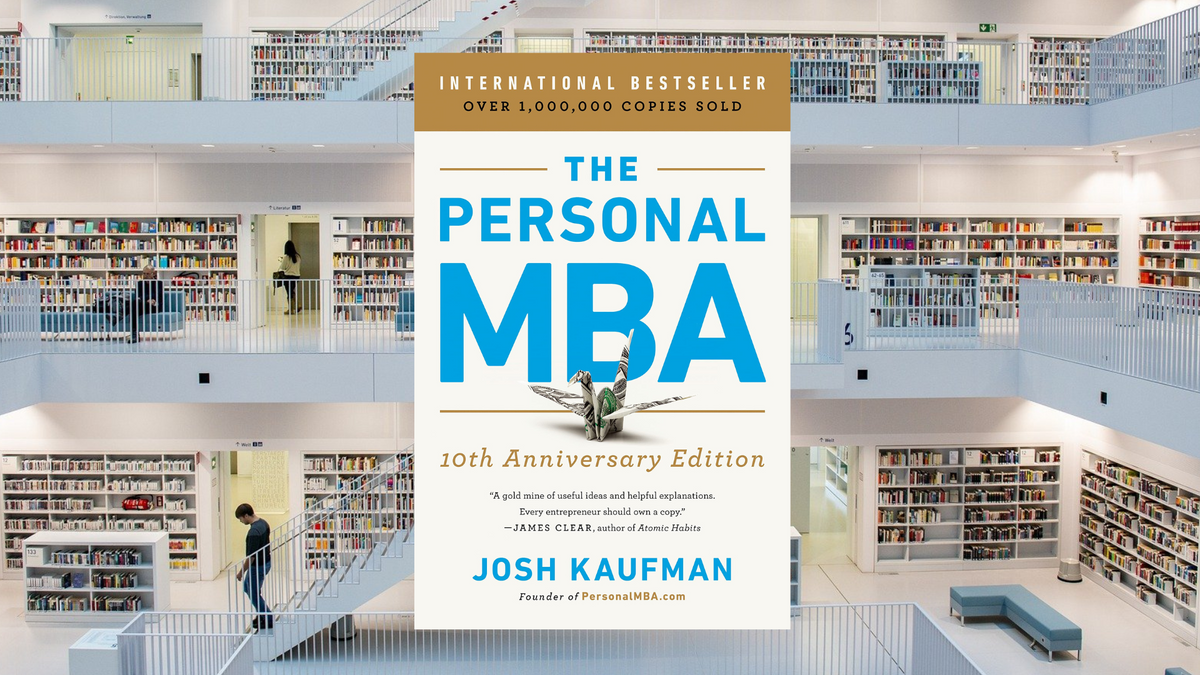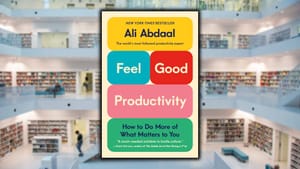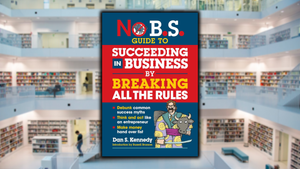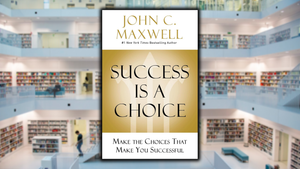
This Book is For:
*Students who are thinking about pursuing a career in business, but aren't quite sure yet whether business school is the right move for them, or if there's another way to meet their same goals.
*Anyone who doesn't have $200,000 lying around to spend on business school, but who wants to expand their knowledge of crucial business skills, learn about best practices, and set themselves up for a career in business without saddling themselves with unmanageable debt.
*Mature entrepreneurs who want a top-level refresher course on the fundamentals of business success, and who want an expert overview that they can keep within arm's reach and access whenever they're faced with a critical business decision that they need to get right.
Summary:
“Business schools don't create successful people. They simply accept them, then take credit for their success.”
-Josh Kaufman, The Personal MBA
The legendary entrepreneur Derek Sivers called this book a “masterpiece,” and he says it’s now the one “START HERE” book he recommends to everybody interested in business.
The Personal MBA is a wide-ranging, comprehensive overview of everything you need to know to succeed as a business owner, and there’s a reason it’s sold more than a million copies. Fun Fact: Derek actually asked Josh Kaufman to be his personal coach and mentor after he finished reading it!
Not only that, but it also passes the “Investment Test” with flying colors. Ask yourself: If you were to trade 10 dollars and 10 hours of your time, and in exchange, you’d save one hour a week for the next two years, would you take that offer?
If you value your time at, say, just $10/hour (a gross underestimation, in my opinion), then after that time, you’d have saved $1,040 ($10/hour, for 104 weeks = $1,040, minus your initial investment). Yes, this book can save you a ton of time and frustration, but it goes much deeper than that, considering the exorbitant cost of business school today!
Attending one of the top three business schools (in America) will saddle you with around $150,000 worth of student debt, but you’ll also lose $100,000 or more (as an estimate) in lost salary or opportunity costs because you were in school “learning” when you could have been out in the real world earning.
At the time of this writing, there are eight different US business schools where the cost of an MBA exceeds $300,000. This book? The Personal MBA? You can get it for free from the library, for just a few dollars at a used book store or on Amazon, and this breakdown is included in your membership to the Stairway to Wisdom. Total savings for you? Nearly $400,000!
The fact is that MBA programs don’t have a monopoly on advanced business knowledge. You can learn these things without drowning in debt, and this book is an excellent start.
It covers over 200 basic to advanced business concepts, explains them simply, with easy-to-understand examples, and links back to Josh’s website, where he goes into them more deeply. The Personal MBA is an invaluable reference manual that deserves to be found on every serious businessperson’s bookshelf. Ironically, it’s even been used as a textbook for business courses at Stanford University, New York University, Howard University, and Portland State University!
Josh's research has directly saved prospective business students millions of dollars in unnecessary tuition, fees, and interest by publishing this extremely high-level book, which covers:
*The 5 Core Processes of a Business
*The 5 Fundamental Human Drives
*10 Ways to Evaluate the Potential of a Market
*The 12 Standard Forms of Value
*The Only 4 Methods Used to Increase Revenue
*And so much more...
Honestly, the only thing better than reading this book would be actually going out and starting a business; learning by painful trial and error until you learn these lessons in the harsh real world. You’ll have to learn them anyway, so you may as well arm yourself with as much business knowledge as you can - basically for free - before you head out and learn the hard way.

Key Ideas:
#1: The 5 Core Processes of a Business
“Here’s how I define a business: Every successful business (1) creates or provides something of value that (2) other people want or need (3) at a price they’re willing to pay, in a way that (4) satisfies the purchaser’s needs and expectations, and (5) provides the business sufficient revenue to make it worthwhile for the owners to continue operation.”
According to Kaufman, there are five core processes of a business, and they are, as he shows, interdependent. Each part impacts the other core processes, and when they all function well together, you have the makings of a wildly successful business.
The first part is about value creation, which we’ll discuss in the next Key Idea. Every business produces or provides something of value to a market of customers that values it. If you don’t create something that other people value, then your venture is essentially a hobby. It can be done purely for its own sake - if you find value in it - but it won’t be a good business idea.
Next comes marketing, which is just as essential as having a valuable product. If you’ve created something of value that fills a need, but nobody knows about it, you don’t have a business. There’s a Zen koan in there somewhere, but you get the idea.
Third is sales. You need to sell the value you create, and if you don’t, you’re basically running a nonprofit, giving away your great product for free. You can do that, and perhaps as a form of lead generation, giving away something for free can be a great idea, but in order to have a business, you eventually have to sell something at a price that people are willing to pay.
Value delivery comes in at number four, and that’s absolutely critical as well. You have to deliver on the value that you’ve promised to deliver, or your business isn’t going to be around too long. In fact, the bar is so low here, that it’s quite lonely along the “extra mile.” We used to notice service when it was bad, but now we notice it when it’s good! Average is everywhere, so value delivery is one area where you can really set yourself apart by going above and beyond for the people who’ve placed their trust - and their cash - in you.
Lastly, we’ve got finance, and that’s simply to say that a company that doesn’t bring in enough money - or lets enough of it slip through the cracks and disappear - will eventually close. You have to be good at the finance side of things, and that’s where systems (checklists, procedures, etc.) can play a big part.
Also worth mentioning is the fact that any skill related to those five core processes is always going to be economically valuable for individuals as well. If you can create something of value, let people know about it, sell it to them, deliver on your promises, and capture some of the value that you’ve created, then you will be rewarded financially in today's business world.
#2: How to Create Value
“Every successful business creates something of value. The world is full of opportunities to make other people’s lives better in some way, and your job as a businessperson is to identify things that people don’t have enough of, then find a way to provide them.”
The above quote is one that most people would do well to have pasted onto their bathroom mirror or on the dashboard of their car so they can see it and think about it every single day. It really is the essence of business: solving problems for people who are in need of solutions.
In fact, if you say that you can’t find a good business idea, what you’re really saying is that the world is perfect and needs nothing.
Alex Hormozi, the business mentor I’ve personally learned the most from over the last year, uses a very simple “value equation” to create offers that people would feel stupid saying no to. The equation basically goes like this:
[Dream Outcome] + [Likelihood of Achieving It] / [Time Delay + Effort]
What this means is that you paint a vivid picture of what their “Dream Outcome” looks like, or what their life will be like after they’ve bought, consumed, and implemented your solution. You also show them that your solution is the right vehicle to bring them to the solution and that it won’t take nearly as much time or effort as the other possible solutions on the market.
If you can satisfy those four demands, you’ve created an extremely valuable offer. You also win by satisfying an extremely acute need, such as, for example, the need for water in the desert. A person suffering from dehydration in the middle of the Sahara will be willing to pay more for a bottle of water than they’d be willing to pay for a diamond ring or something. The value increases in direct proportion to the need or desire.
Valuable offers also satisfy one or more of a customer’s core human drives, which we’ll be discussing in the next Key Idea. What you always want to be focusing on, though, is increasing the value of the offer, and not necessarily increasing your own personal profit. The latter is a natural byproduct of solving big, important problems in the lives of your customers. Business is inherently unselfish, despite what Ayn Rand may want us to believe!
Alex Hormozi’s and Josh Kaufman’s approaches come together in their discussion of the “hassle premium” as well, which is basically when you charge to remove some level of inconvenience from your customers’ lives. If it takes too much time, and too much effort to achieve a positive result, and involves an extra layer of confusion, complexity, uncertainty, etc., then you can work that into your price, and customers will still be willing to pay it.
People pay for ease and convenience, and that’s an important part of the value as well. For example, it’s said that the greatest business idea in the world would be just to take something that people need to do anyway and do it for them in half the time.
Also important here is constant, neverending improvement - iteration - over time. You want to be constantly on the lookout for ways to improve your product and your offer and to increase the amount of value you’re delivering for the price that you’re charging. This is how you win in business.
The key is to do this quickly and make a series of small bets about what you can improve on and that your customers will respond favorably to:
What’s working right now? What do customers say that they like or don’t like about your product? What can you add or remove that will increase the amount of value they’re getting?
Implement what you learn as quickly as possible, release that next iteration, and then gauge customer reaction and feeling. If they like this new version, you can make additional tweaks or execute other ideas to add value. As long as you’re keeping track of what you’ve tried before, how customers have responded to it, and what you have planned for the future, you’ll be on the right track.
#3: The 5 Basic Human Drives
“At the core, all successful businesses sell the promise of some combination of money, status, power, love, knowledge, protection, pleasure, and excitement. The better you articulate how your offer satisfies one or more of these drives, the more attractive your offer will become.”
Theories and models meant to describe innate human drives vary in complexity, truth, and understanding, but many of them cover the same ground, and all successful products and businesses cater to at least one or more of them.
As far as Josh Kaufman is concerned, they fall under five distinct categories, and they are:
The Drive to Acquire: To accumulate material objects and possessions, and also intangible things like status, influence, and power, to name just a few. We like to get stuff and to have other people know that we have that stuff. Porsche satisfies the drives (no pun intended) of their customers to acquire.
The Drive to Bond: To feel valued, loved, needed, and respected. Social media satisfies (and sometimes frustrates) this desire, as well as any product or service that makes us feel attractive, desirable, liked, and/or connected.
The Drive to Learn: To satisfy our craving to know, our curiosity about the world, our place within it, and our direction. Books, courses, all of academia, etc. They all satisfy this drive.
The Drive to Defend: To feel safe, to protect ourselves and the people we care about, and to maintain our property and possessions. Home security systems satisfy this drive, as well as self-defense classes and courses, etc.
The Drive to Feel: To experience new sensory stimuli, have intense emotional experiences, feel pleasure and/or excitement, anticipation, etc. Disney Land, Hollywood, Netflix - all these products, places, services, and experiences help satisfy this drive.
That’s Josh Kaufman’s view on the basic human drives. But, as I mentioned above, theories and models differ. For example, Tony Robbins has it that humans have six needs, being Certainty, Uncertainty/Variety, Significance, Connection/Love, Growth, and Contribution.
I have a lot of sympathy for Robbins’ formulation as well, but there’s, of course, Abraham Maslow, the pioneering work of Scott Barry Kaufman, Ken Wilber’s "Theory of Everything," and also the subconscious fear of death, as described in Ernest Becker’s Pulitzer Prize-winning book, The Denial of Death.
Humans are complicated, okay? We have many different competing - and complementary - drives pushing and pulling us in all these different directions, and we’re strongly, subtly influenced by all of them each and every day. Kinda makes it hard to plan your day, doesn’t it?
For our purposes, however, it’s important to understand that all of these drives coexist, and successful businesses satisfy these drives with their products and services. If you can add value in any (or many) of these areas, and deliver that value efficiently and effectively, you’ll be extremely well-rewarded in the global marketplace.
#4: 10 Ways to Evaluate a Potential Market
The market you decide to enter can make or break your business. There are 10 different factors that Josh Kaufman identifies as being important when considering moving into a specific market, and you need to take all of them into consideration before diving in with what you think is a great idea.
Simply put, you could have the greatest, most wonderful product or service in the world, but if there’s no market for it, then you don’t have a business.
Urgency: This is what kind of pain or discomfort your potential market is currently experiencing and that your solution supposedly addresses. A lack of water in the desert is an urgent need, whereas a neighborhood with 8 grocery stores already isn’t going to desperately clamor for a 9th one.
Market Size: This refers to how many potential customers there are in your market. Just as importantly, it’s also about how many of them you can reach, or your Total Addressable Market (TAM). If there are 7,000,000 in the market for water, but you can’t reach any of them, then you don’t have a business.
Pricing Potential: How much can your customers afford to pay for your product or service? Can you charge what the product is worth, and does that number align with what the market is willing and able to pay?
Cost of Customer Acquisition: This is one of the key numbers you need to know for your business. How much does it cost you - in dollars or time - to gain a new customer? By this, I mean your advertising budget, the salary of your salespeople, the cost to produce your ad creative - basically everything that goes into marketing to, selling to, and enrolling a new customer.
Cost of Value Delivery: How much does it cost you - again, in time and money, plus any other resources - to deliver the result you promised to your prospective customer? If you can deliver on your promise, but it eats up all of your available resources with no profit margin left over for afterward, you need to rethink some things in your strategy.
Uniqueness of Offer: This is pretty self-explanatory, but it’s actually quite shocking how many people are just “me too-ing” into the market, without providing anything different, better, more interesting, or better-produced than everything that’s come before. It’s unlikely that your product has “never been seen before” (which would actually be bad, because that means that nobody wants it), but you have to bring something new to the market that isn’t already being done. Like the same service except in half the time, or with less effort, etc.
Speed to Market: This refers to how fast you can get your business up and running and serving customers. If you need or want positive cash flow right now, but it’s going to take you 3-5 years to prototype a new product, get it developed, get it tested, etc., then you’re much better off abandoning that idea and pursuing something else.
Upfront Investment: Again, this is pretty self-explanatory. It refers to how much you need to invest first, before seeing a positive return on investment (ROI). If you can wait, that’s fine, but cash flow is the lifeblood of a business, and you don’t want to wait too long before you start earning a profit and pay off that initial investment.
Upsell Potential: This basically refers to whether or not you can sell something else to someone who has just bought from you, or whether the transaction/relationship is essentially completed when that first sale is done. Upsells are when you sell them more of what they just bought (say, a monthly recurring supply), and cross-sells are when you sell them something different that complements the original purchase. For example, a realtor could cross-sell home insurance, interior decorating, lawn care, etc.
Evergreen Potential: This is all about ongoing client relationships, and how much work you have to put in after the initial sale is done. Authors wouldn’t really have to worry about this (buy my book, read it, wait for the next one), but personal trainers would. They would keep meeting with clients for the duration of their contract, costing them time and attention each session.
#5: The 12 Standard Forms of Value
Another list! This one is all about the different forms of value that you create or provide to your customers. You’ll instantly recognize most of them, but it’s interesting to look at them this way, as distinct forms of value that differ in certain key respects.
Products: You know…things. These are staplers, cars, toasters, books, etc. Anything material that you create and sell to someone else.
Services: Again, this is one that virtually everyone is intimately familiar with. We’re talking haircuts, personal training, executive coaching, lawn care, etc. Anything that you do for someone else that makes their lives easier, stress-free, or more enjoyable.
Shared Resource: These can include gyms, coffee shops - basically anything where diverse groups of people gather to share the same space but aren’t necessarily interacting with one another.
Subscription: Examples of subscriptions include the Stairway to Wisdom, Netflix, Amazon Prime, etc. Anything that renews monthly or yearly, usually, and that customers use often.
Resale: Retail stores fall under this category, where a manufacturer will create something like a t-shirt or a washing machine, and another store, acting as a distribution center, will then sell it to the people who frequent that store.
Agency: Athletes and movie stars need agents, but you could also include realtors here as well, lawyers, etc. Basically, anyone who acts on your behalf as a recognized expert in an area where most people remain ignorant of dangers and best practices.
Audience Aggregation: Social media companies like Facebook and Instagram cash in on this kind of value, profiting from the attention that they’re able to command across their platforms.
Loan: If you have access to capital, and other people want or need access to that capital, then you can provide that to them and create value that way. Car loans, mortgages, etc.
Lease: Similar to the above, when you lease a space, a car, etc.
Option: This category includes movie rights and licensing rights to, say, a song or another creative work. You sell the rights to someone else, thereby giving them permission to use it, and you profit from the transaction that way.
Insurance: Again, most people are familiar with this. Homeowners insurance falls under this category, car insurance, health insurance, etc.
Capital: Angel investors taking a calculated risk on a business in return for equity fall into this category. Whenever you deploy your capital to recoup your investment later on for a profit is included here.
#6: The 9 Factors Involved in Buying Decisions
A lot goes into deciding whether to make a purchase or not. Josh Kaufman identifies nine separate factors that come together to inform those decisions, and they are:
Efficacy: Is this going to work? What is the likelihood of success, the likelihood that this product is going to work for me, this service is going to benefit me, etc.?
Speed: How fast is this going to work? Is there another product out there that can do the same job in a fraction of the time? Remember earlier that we said that one of the best business models in the world is to take something that everyone needs to be done anyway and do it in half the time.
Reliability: Is this going to break down at the worst possible time, or is it going to last me for years and years without giving me any issues? Am I likely to need a replacement soon, or can I depend on this product to “get me where I need to go,” so to speak?
Ease of Use: This is pretty self-explanatory, along with the first three. Does this thing require a level of specialization, knowledge, or ability that I don’t have? Or am I going to be able to use it quite easily? Will it take me a long time to figure out, or can I likely start using it right away?
Flexibility: Do I need to use this in one specific way, to solve one specific problem, or to make one specific task easier? Or can I use this product for various uses, and in different situations, and have it still perform reliably?
Status: What do other people think of the fact that I own this? If people see me using this, or see that I have this, what will they think? Will it elevate my status, or will it lower me in their eyes? This is a more important consideration to many people than is immediately obvious. Once you see it, though, you start seeing it everywhere.
Aesthetic Appeal: Does it look pretty? Does it look good? Is it going to look good in my house?
Emotion: This can be seen in a few different lights. First, there’s the emotion when it comes to the buying decision itself, whether people will buy something impulsively, in a moment of weakness. Alternatively, it can also refer to how people believe they will feel after they have bought it - what kind of emotional states they will experience if they incorporate this product or service into their lives.
Cost: Finally, there’s the price. This is a huge topic as well, and we cover it in one of the other Key Ideas below. Basically, some people just want to pay the lowest price, and they want to find the best deal possible. These people are usually not your best customers, because they’ll usually be trickier to deal with, and they won’t be very loyal either, always looking to jump to some other product or service if they can get it for cheaper.
There’s another class of customers, however, that want to pay more, and, more importantly, have other people know that they’ve paid more. You know these kinds of people; they usually make themselves known, whether you want to hear from them or not.
Another consideration that has to do with the price is the fact that paying more for something increases the perceived value of the thing you just bought. We value more highly that which we paid more for, or that which was harder to get, so it’s easier to “sell” the purchase to yourself, and convince yourself that it was the right decision, if you ended up paying more for it.
#7: Critical Assumptions
Critical assumptions are those statements that need to be true in order for your business idea to succeed. In effect, what you’re saying is: “There’s a market for what I’m building, I have the skills and resources to bring it to market, and if I do so, I will be able to attract enough customers via sales and marketing in order for me to be successful and sustain my business.”
More specifically, critical assumptions could include:
“There aren’t enough reasonably-priced childcare facilities located in this area already. I should start one.”
“There are more than enough people in this area who are both looking for a home to purchase, and who are able to buy one at the price I need to sell at for me to make a profit.”
There is any number of other examples you could come up with, but field testing is going to be your friend here. You need to field test your critical assumptions and see if they stand up to scrutiny. A great way to do this is with an MVP or Minimum Viable Product, or with pre-orders.
With an MVP, what you’re doing is building something with the bare minimum of features and functionality for actual customers to go out and want to purchase it. You’re not building some completely perfect thing and hoping that people want it; you’re building something rudimentary, then improving it over time, once you know that it’s something people are likely to be interested in.
We did this with the Stairway to Wisdom. We didn’t create this perfect website with tons of pages and thousands of complete summaries, hoping people would sign up. We started with a basic website, a basic package of 50 breakdowns, and then improved it from there, once we realized that real people actually found it valuable and were willing to pay for it.
What you can also do is take pre-orders before you even create anything! Just make it clear to potential customers that they are buying something that isn’t quite ready yet. How many preorders you need depends on what you’re selling, but if you get, say, 100 people preordering a book or a course, etc., then you can go ahead and actually make the thing, without wondering whether it’s something that people already want.
And if not many people preorder it, or if you realize that it’s not actually going to work? You just refund the money of the people who already bought, shut down operations for a while, and go to work thinking up something else.
#8: The Cardinal Sin of Marketing
“Advertising is the tax you pay for being unremarkable.”
If you can’t even get your dream customer’s attention, your business is doomed to fail. The first rule of marketing, however, is that your potential customer possesses limited attention. You need to find a way to break through the noise, so the cardinal sin of marketing is for your approach to be boring.
You basically need to operate under the assumption that people are hopelessly preoccupied, and that you need to give them an especially strong reason to stop what they’re doing and pay attention to you instead.
People are always filtering their perceptions, which means they are constantly deciding what to pay attention to and what to ignore. You need to find a way to get around their filters, and one of the most effective ways of doing this is with what’s called a hook.
In social media marketing and content creation, a hook is what appears in the first 1-30 seconds of the video in order to entice a viewer to keep watching. In the context of business, a hook may also refer to a single phrase or sentence that describes your offer’s primary benefit.
Apple’s tagline for the iPod was “1,000 songs in your pocket,” and obviously, that was an incredibly effective hook for them. My favorite ebook service, Scribd, is sometimes called “Netflix for books.” That’s another great one because it’s catchy and memorable, and you don’t have to spend a lot of time trying to figure out what it is. It’s Netflix except, you know…for books! That’s a solid hook.
#9: The Four Ways to Price an Offer
Price is how much you’re charging, and value is whatever someone is willing to pay. When these align in a way that’s favorable to both parties in a transaction, then everything works.
The Pricing Uncertainty Principle states that all prices are arbitrary and malleable - it’s an executive decision, and you can charge whatever you want - but your prices have to be justified to a potential buyer before any sort of transaction can take place.
Josh Kaufman lays out four pricing methods here in The Personal MBA, and they are:
Replacement Cost: Usually, this takes the form of a “cost-plus” value, which means the total cost of making or replacing something, plus the markup that allows you to make a profit on the deal.
Market Comparison: This price is arrived at by looking at similar products on the market and pricing yours relative to them. This can be tricky, though, because if you just try to compete on price, eventually, your competitors are just going to sell for cheaper and cheaper, and you eventually turn yourself into a “commodity,” rather than something of really high value. This “race to the bottom” usually isn’t all that profitable for anybody except the clear market leader.
Discounted Cash Flow/Net Present Value: These are the sorts of terms that make people’s eyes glaze over, but all it really means is how much something is worth if it can bring in money over time. If something will generate ongoing cash flow, like a business, you can sell it at a larger upfront cost because the buyer knows (or at least believes) that they will recoup their investment, and then some, over time.
Value Comparison: This is, according to Kaufman, usually the best way to price something, and it means to set a price relative to the value it has to the specific buyer. For example, if your customer believes that taking your online course is going to result in their earning an extra $10,000 this year in side income, then they’re going to be willing to pay at least $1,000 (or more) to take that course. Whereas some other customer who doesn’t believe that your course can help them earn any additional income isn’t going to be willing to pay anything close to $1,000 for that same course.
In Josh's words:
“Value comparison is usually the optimal way to price your offer, since the value of an offer to a specific group can be quite high, resulting in a much better price. Use the other methods as a baseline, but focus on discovering how much your offer is worth to the party you hope to sell it to, then set your price appropriately.”
#10: How to Increase Revenues Dramatically
There are only four ways (4!) to increase revenue. Every other tactic, strategy, etc., can be boiled down to one of these four things:
Sell to More People: Increase the number of customers you serve, and the number of people consuming your products. This is known as scale.
Sell More to Each Person: Increase the average size of each transaction by selling them more of the same stuff, or by selling them other stuff (upsells and cross-sells, etc.).
Sell to Each Person More Times: Increase the frequency of transactions per customer, by selling to them more often. So, instead of someone eating at your restaurant once a month, you convince them to eat there twice a month, etc.
Raise Your Prices: An obvious one here. Basically, you find customers who have more disposable income, you increase the perceived value of your product, etc.
That’s really it. Everything you could possibly do to make more money involves one or more of those four things. You should also remember the Customer Lifetime Value, or LTV, which means the total value of a customer’s business over the lifetime of their relationship with you. When you know the LTV of your prospects, you can then start to budget for exactly how much you’re able to spend to acquire new customers.
For example, if you know that every new customer spends an average of $300 with you over the course of their relationship with your business, you can theoretically spend up to $299.99 in advertising and marketing and still turn a profit.
#11: The 4 Methods of Completion
"What is important is seldom urgent, and what is urgent is seldom important."
-Dwight Eisenhower, 34th President of the United States
In the beginning, you have to do pretty much everything yourself. You’re the one doing the outreach and the marketing, writing the sales copy and the blog posts, publishing on social media, interacting with customers, etc. However, as your business expands, if you keep insisting on doing everything yourself, you’re going to burn out eventually.
Not only that, but you’re often not the person best suited to perform particular tasks anyway! For everything that you hate to do, there’s someone else out there who either loves to do it, is much better at it, or possibly both.
So to get more done, Josh Kaufman recommends dividing your entire task list into four separate categories.
Completion: These are the tasks that only you can do, or that you do particularly well. Things like setting the overall direction of the company, managing your relationship with top clients, etc. Sure, you could hand these off to someone else, but you’re the one best suited to do it. It’s important not to mislead yourself here and tell yourself that there’s no one else in the entire world who could possibly do as good a job as you can, because, honestly, that’s probably not true. Tasks in this category reside in your “zone of genius” and are tasks that literally only you could do.
Delegation: In this category are tasks that are still important, but for whom there are people who can do them at least 80% as well as you can. They still need to get done, but they don’t need to get done by you. So delegate them to someone else and get back to your zone of genius.
Deferment: These are non-critical tasks that are also not time-dependent. Maybe they should probably get done eventually, but the tasks in the first two categories need to be done first before you can even think about these ones. They can wait.
Deletion: This category is reserved for those busy work tasks that don’t need to get done at all. Business owners and entrepreneurs spend a lot of time re-designing their websites and researching new SEO strategies for social media, but that’s probably not going to make much of a difference - if any. You’re better off just deleting these unimportant and unnecessary items and getting on with your life.
Another helpful term to remember is MIT or Most Important Task. Personally, I usually set three MITs at the beginning of each day (and ideally, the night before) and make sure I attack these before I do literally anything else. These are the “80/20” tasks that make the absolute greatest difference in what you’re trying to achieve. To identify them, you can ask, “If I did only this one thing today (or these three things), would I view today as a success?”
#12: Key Performance Indicators
"What gets measured gets managed."
-Peter F. Drucker
Key Performance Indicators, or KPIs, are the measurements of the most critical parts of your business system. Their main function is to help business leaders and team members avoid wasting time, attention, and resources measuring things that don’t actually matter all that much to the business. You could measure Facebook likes and Instagram followers, but it’s much more effective to measure revenue.
The types of KPIs - the things that you’re going to want to measure and keep an eye on - are going to change within and between businesses, but they usually manifest in these areas:
Value Creation: Measurements of how quickly your business is creating value in the marketplace and your current levels of inflows.
Marketing: Measurements of how many people are paying attention to your offer and your ad creative, and how many potential customers are giving you permission to contact them later with more information (for example, by giving you their email address, etc.)
Sales: Measurements of how many potential customers are becoming actual customers, and what their Lifetime Customer Value is, which we’ve covered in a previous Key Idea.
Value Delivery: Measurements of how quickly and effectively each customer is being served, plus anything having to do with customer complaints, returns, feedback, etc.
Finance: Measurements of your profit margin (how much is left over in profit once your costs are covered), how much purchasing power you have, whether the company is financially solvent, etc.
Of course, you can have multiple KPIs, but if everything is a Key Performance Indicator, then nothing is. Just like you can’t have more than one priority, not everything can be “key.” A healthy limit would be to have about 5 KPIs and adjust from there. Just don’t fall into the trap of collecting so much data that you can’t figure out the story that data tell you.
#13: Structuring Your Own Personal MBA
"A truly good book teaches me better than to read it. I must soon lay it down, and commence living on its hint. What I began by reading, I must finish by acting."
-Henry David Thoreau
Josh Kaufman has compiled a truly spectacular reading list of business books that you could use to structure your own personal MBA curriculum. However, he says that even though there are thousands of great books about business on the market, not every book is right for The Personal MBA.
On his website, Josh lists four criteria that were used to select the books featured on his list:
- Valuable, Action-Oriented Content. Does the book contain a lot of useful, practical information about how business works, how you can add value, and why the material in the book is important? Is the book based on scientific research or direct personal experience? Does it contain tools, ideas, and concepts that can be put to use immediately in the real world?
- Acceptable Time Commitment. Is the book a good educational value for the amount of time invested? Can you get the key points of each book quickly?
- Self-Learning Friendly. Is this book designed to keep the reader’s mind engaged? Does the author present the material effectively and make the learning process enjoyable?
- Reference Value. Will this book be a valuable resource to turn to when you need information on a specific topic? How does the book re-read? Is it a book worth keeping for many years? Comprehensive Set of Resources. For any business-related question, does at least one of these books provide useful guidance and insight?

Book Notes:
“You wasted $150,000 on an education you coulda got for a buck fifty in late charges at the public library.”
-Will Hunting (played by Matt Damon), Good Will Hunting
“Self-education is, I firmly believe, the only kind of education there is.”
-Isaac Asimov
“If I read a book that cost me $20 and I get one good idea, I’ve gotten one of the greatest bargains of all time.”
-Tom Peters
“Clear language engenders clear thought, and clear thought is the most important benefit of education.”
-Richard Mitchell
“Business degrees are often a poor investment, but business skills are always useful, no matter how you acquire them.”
“One of the most important things about learning any subject is the fact that you don’t need to know everything – you need to understand a small set of important concepts that provide most of the value. Once you have a solid scaffold of core principles to work from, building upon your knowledge and making progress becomes much easier.”
“Education is not the answer to the question. Education is the means to the answer to all questions.”
“College: two hundred people reading the same book. An obvious mistake. Two hundred people can read two hundred books.”
-John Cage
“Institutions will try to preserve the problem to which they are the solution.”
”Every time your customers purchase from you, they’re deciding that they value what you have to offer more than they value anything else their money could buy at that moment.”
“The society which scorns excellence in plumbing as a humble activity and tolerates shoddiness in philosophy because it is an exalted activity will have neither good plumbing nor good philosophy: neither its pipes nor its theories will hold water.”
“Where there’s a hassle, there’s a business opportunity.”
“If you can get a prospective customer’s attention as soon as they become interested in what you’re offering, you become the standard by which competing offers are evaluated.”
“The essence of effective marketing is discovering what people already want, then presenting your offer in a way that intersects with that pre-existing desire. The best marketing is similar to education-based selling: it shows the prospect how the offer will help them achieve what they desire. Your job as a marketer isn’t to convince people to want what you’re offering; it’s to help your prospects convince themselves that what you’re offering will help them get what they want.”
“When your work speaks for itself, don’t interrupt.”
Calls to Action: “If you think you’re being too obvious, you’re doing it right.”
“If you want an audience, start a fight.”
-Irish proverb
“We confess our little faults to persuade people that we have no large ones.”
“Sometimes, when I consider what tremendous consequences come from little things, I am tempted to think: there are no little things.”
“Don’t compete with rivals - make them irrelevant.”
“I never lost money by turning a profit.”
“Profit margin is the difference between how much revenue you capture and how much you spend to capture it, expressed in percentage terms.”
Profit Margin Equation: ((Revenue – Cost) / Revenue) x 100 = % Profit Margin
“If you would know the value of money, go try and borrow some.”
-Benjamin Franklin
“Improve by 1% a day, and in just 70 days, you’re twice as good.”
“Good books, magazines, blogs, documentaries, and even competitors are valuable if they violate your expectations about what’s possible. When you discover that other people are doing something you once considered unrealistic or impossible, it changes your Reference Levels in a very useful way. All you need to know is that something you want is possible, and you’ll find a way to get it.”
“The People’s Theatre, what nonsense! Call it the Aristocrat’s Theatre, and the people will come.”
-Jules Renard
“Human beings, who are almost unique in having the ability to learn from the experience of others, are also remarkable for their apparent disinclination to do so.”
-Douglas Adams
“The more attractive an option looks in terms of status, the more likely it is to have significant drawbacks or pitfalls (given extreme competition for that status), and the more likely you are to ignore or undervalue those drawbacks and pursue that option anyway.”
“There are millions of ways to get better results in important areas of life if you’re willing to ignore alluring distractions and focus on doing what works.”
“Because protective mode is physiological, it’s often best to use physiological means to calm yourself down. Exercise, sleep, and meditation can help calm your mind by metabolizing or counteracting the stress hormones that have been flooding your body. When you’re feeling overwhelmed, going for a quick run or lifting weights can do wonders for your state of mind.”
“In general, we are least aware of what our minds do best.”
“To think is easy. To act is difficult. To act as one thinks is the most difficult.”
-Johann Wolfgang von Goethe
“Rule your mind, or it will rule you.”
-Horace
“Delegation is effective for anything another person can do 80 percent as well as you can.”
“Setting a vague goal is like walking into a restaurant and saying, ‘I’m hungry. I want some food.’ You’ll stay hungry until you order something.”
“Fuzzy goals like ‘I want to climb a mountain’ aren’t very helpful because they don’t give your brain any material to work with. Which mountain? Where? When? Why? Without answers to these questions, you probably won’t do anything at all.”
“Once you make a conscious decision to achieve the goal, your mind starts finding ways to get it done.”
“I may not have gone where I intended to go, but I think I have ended up where I intended to be.”
-Douglas Adams
“‘Being happy’ is not an achievement – it’s a quality of your present experience. States of Being are decision criteria, not goals. It’s okay to want to ‘be happy’ or ‘be successful,’ but treating these desires as goals is a recipe for frustration.
Instead of treating these states as achievements, it’s far better to think of them as decision criteria – ways of understanding whether or not your actions are leading to your desired results.”
“Take some time to prime your brain to notice what’s important to you, and you’ll find it.”
“Go as far as you can see; when you get there, you’ll be able to see farther.”
“If we attend continually and promptly to the little that we can do, we shall ere long be surprised to find how little remains that we cannot do.”
“Don’t ask the barber if you need a haircut.”
“The important work of moving the world forward does not wait to be done by perfect men.”
-George Eliot
“All complex systems that work evolved from simple systems that worked.”
“Those who will not face improvements because they are changes will face changes that are not improvements.”
-Charlie Munger
“Everyone generalizes from one example. At least, I do.”
-Steven Brust
“A danger foreseen is half avoided.”

Important Insights from Related Books:

The Almanack of Naval Ravikant, by Eric Jorgenson:
Being rich and happy are learnable skills. When it comes to learning how to build a business, it's exactly the same thing. If there's a skill you lack, you can learn it; if there's a big scary problem looming over your head, you can overcome it; if you want more out of life, you can have it.
But, there are traps along the way. These traps can take the form of pessimism and self-defeating behaviors; the creeping expansion of desire; bad advice from well-meaning people; and a lot more that The Almanack of Naval Ravikant can help you avoid.
Naval is the founder of AngelList, a website that allows startups to raise money from angel investors free of charge, and he's had over 70 successful exits himself, after investing in companies like Uber and Twitter before almost anyone else.
He's become somewhat of an entrepreneurship/start-up culture icon, and this book is a collection of his greatest wisdom distilled from a decade of podcast appearances and thousands of tweets. After a lifetime of study and application of philosophy, economics, and wealth creation, Naval has proven the impact of his principles, and they're all laid out here in this book.
Sample Quotes from the Book:
"Let's get you rich first. I'm very practical about it because, you know, Buddha was a prince. He started off really rich, then got to go off in the woods."
“Learn to sell. Learn to build. If you can do both, you will be unstoppable.”
"If you're a perpetual learning machine, you will never be out of options for how to make money. You can always see what's coming up in society, what the value is, where the demand is, and you can learn to come up to speed."
Read the Full Breakdown: The Almanack of Naval Ravikant, by Eric Jorgenson

The Education of Millionaires, by Michael Ellsberg:
Just because some of the smartest and most successful individuals in the world dropped out of college or skipped college altogether, does that mean that you should too?
Not necessarily; but in this book, author Michael Ellsberg makes the case that most of what you'll need to learn in order to become successful - by anyone's standards - are skills that you'll never see taught in school.
Teaching any of those success skills would require dozens of books for each one, and Ellsberg doesn't claim to teach you everything you need to know on these pages. But he tells you where to start looking, and what's important to look for.
He doesn't just give you a fish, or even go too deep in teaching you how to fish; he simply explains why you absolutely have to learn to fish, and where to go in order to learn most effectively.
Not only that, but if you're missing any of these critical success skills, you're handicapping yourself horribly and holding yourself back from all that you could achieve and become.
Sample Quotes from the Book:
“I am passionately pro-education. There are few things I care more about than reading and learning constantly. Yet, the lives of the people profiled in this book show conclusively that education is most certainly not the same thing as academic excellence. We’ve conflated them, at great cost to ourselves, our children, our economy, and our culture.”
“The key to making money, and therefore living a life of less stress, is to cause someone to joyfully give you money in exchange for something that they perceive to be of greater value than the money they gave you.”
“The driving theme of the stories in this book is that, even though you may learn many wonderful things in college, your success and happiness in life will have little to do with what you study there or the letters after your name once you graduate.
It has to do with your drive, your initiative, your persistence, your ability to make a contribution to other people’s lives, your ability to come up with good ideas and pitch them to others effectively, your charisma, your ability to navigate gracefully through social and business networks (what some researchers call ‘practical intelligence’), and a total, unwavering belief in your own eventual triumph, throughout all the ups and downs, no matter what the naysayers tell you.
While you may learn many valuable things in college, you won’t learn these things there – yet they are crucial for your success in business and in life. Whether you’re a high school dropout or a graduate of Harvard Law School, you must learn and develop these skills, attitudes, and habits if you want to excel at what you do.
In this new economy, the biggest factor in your success will not be abstract, academic learning but whether you develop the real-life success skills evinced by the people on these pages, and how early you do.”
Read the Full Breakdown: The Education of Millionaires, by Michael Ellsberg
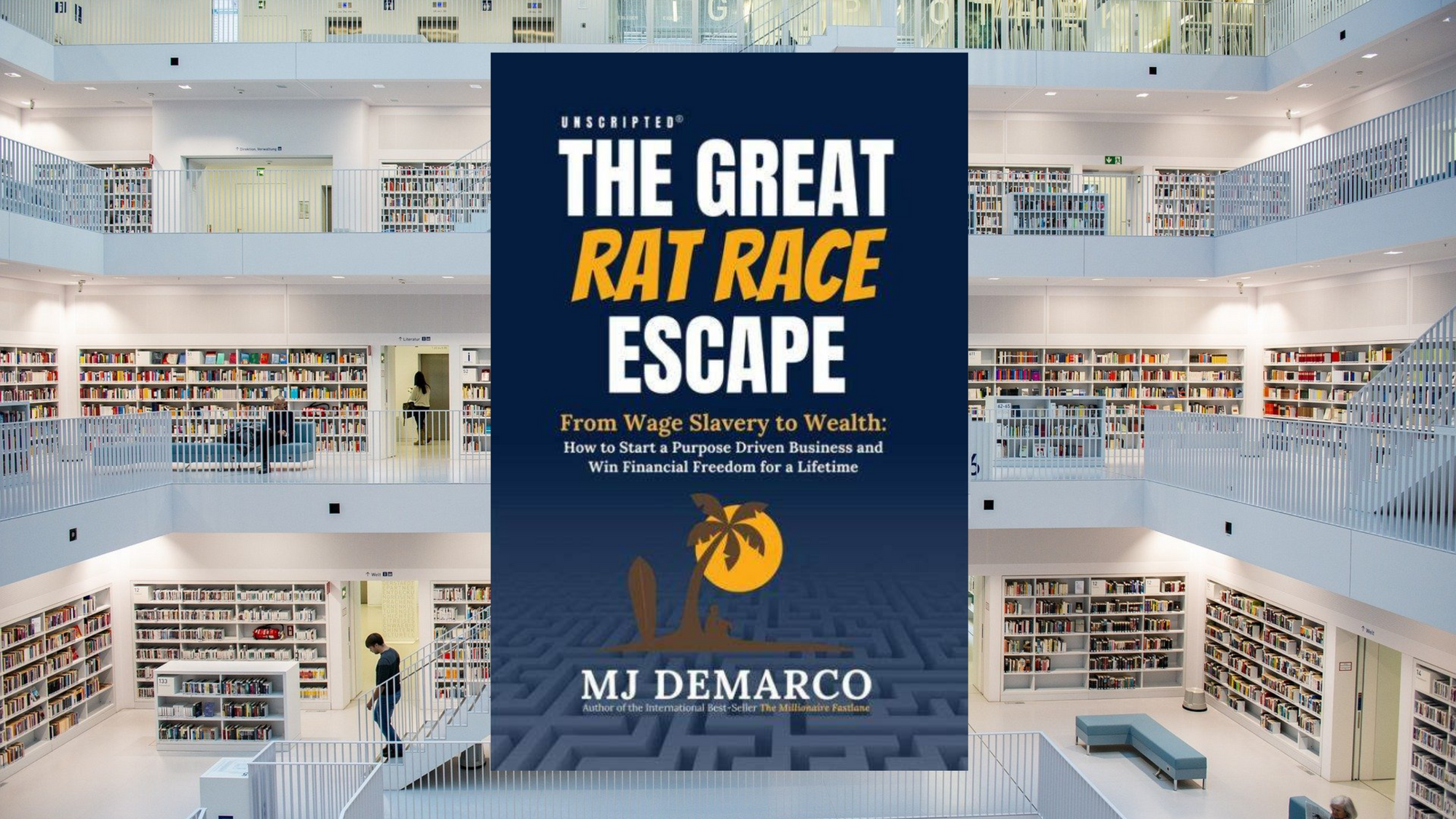
The Great Rat Race Escape, by MJ DeMarco:
An extraordinary life is won on offense and then preserved on defense. This book is about increasing your offensive capacity - and, specifically, about creating an income that will enable you to live free forever - while avoiding the mistakes and pitfalls that derail so many other well-intentioned people as they try to make a big move forward in life.
The Great Rat Race Escape blasphemes against the current “economic religion” of the world, which tries to convince people that they “wouldn’t be too unhappy” working away for 40+ years at a job that they “kinda-sorta like” (or, in many cases, passionately loathe), just so they can maybe - hopefully - get their freedom back fifty years later when they can finally enjoy their money from the safety of the nursing home.
That sounds like a waste of a perfectly joyous life to me, and M.J. DeMarco teaches how we can avoid that fate by starting a business and taking advantage of the internet gold rush that we’re currently experiencing. The creator economy is absolutely booming right now, new businesses are appearing all the time, entrepreneurship is “hot,” and our time is now.
Sample Quotes from the Book:
“Starting a business will be the hardest thing you ever do. Growing it will be the second.”
“Our culture thrives on mediocrity and obedience. It is the world’s business model.”
The CENTS framework that will help determine whether your business has solid fundamentals:
Control – You have full control over your business and you aren’t in danger of losing everything because someone else made a decision that you can’t control.
Entry – It’s too difficult for someone else to enter the market with a similar product or service and compete with you.
Need – Your product or service is something that fulfills a genuine need that exists in the marketplace.
Time – Your profit is divorced from your time so that you don’t physically have to be there when your product or service is sold or generates money.
Scale – Your product or service has no marginal cost of reproduction, meaning that it’s easy and cheap to make more of what you’re selling without you having to put time and money into inventory or creation.
Read the Full Breakdown: The Great Rat Race Escape, by MJ DeMarco
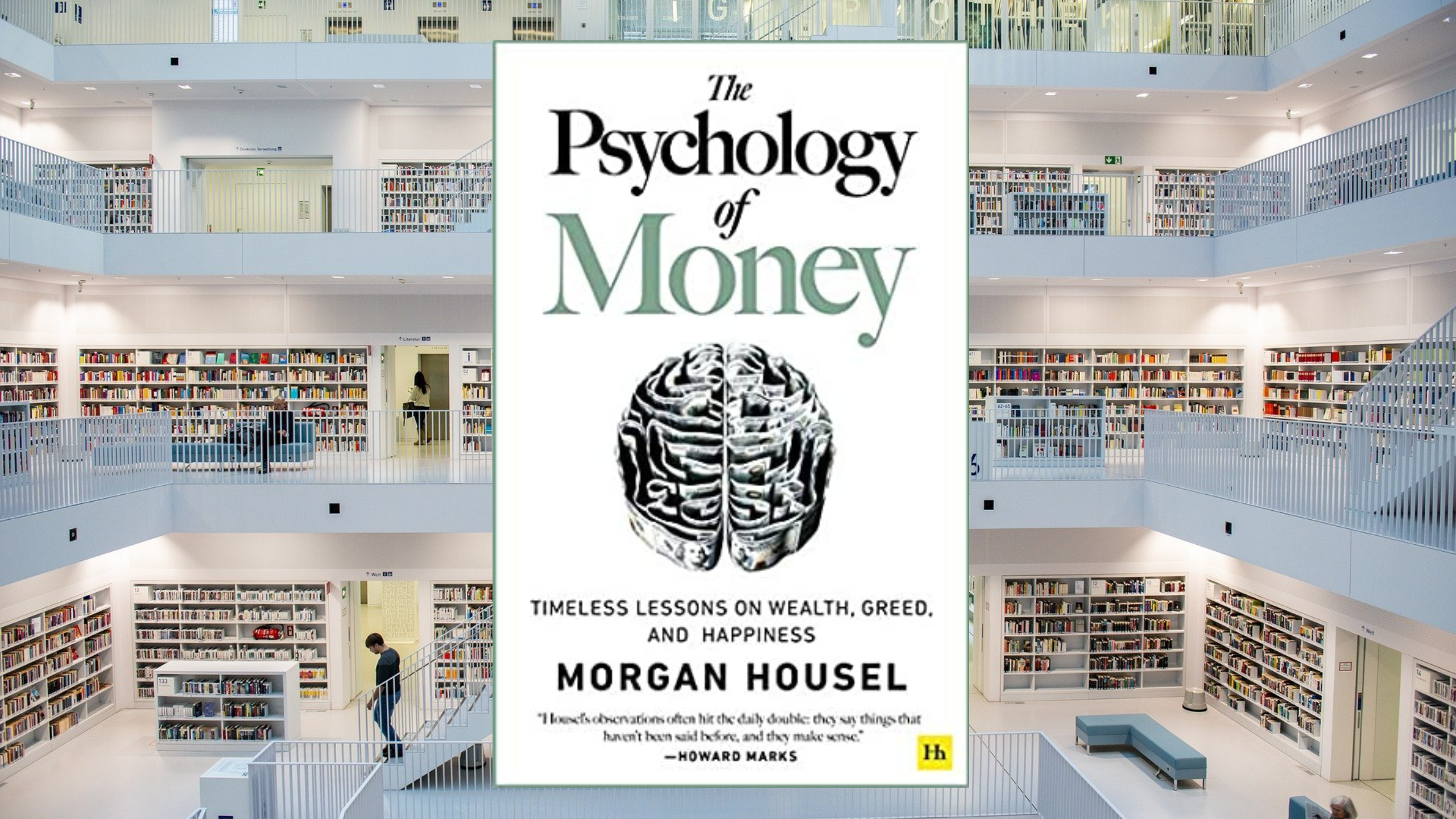
The Psychology of Money, by Morgan Housel:
Doing well with money has a little to do with how smart you are and a lot to do with how you behave. Exploring exactly how this plays out in real life is Morgan Housel's project here, and in this book, he covers 20 of the most important logical flaws, biases, and causes of bad behavior that do the most to make the world of money such a circus.
One of his greatest observations is that knowing what to do tells you nothing about what happens in your head when you actually try to do it, and he also explains why people make decisions with money that may seem crazy to us, but actually make perfect sense to them. No one is crazy, says Housel; it's just that we've each learned different lessons about money depending on our worldview, how we were brought up, and the individual experiences we've had.
In this book, Housel explains why gaining control over your time is one of the highest dividends money can pay, and he discusses the parts that luck and risk play in the formation of our strategies for life.
He also goes to work making you "antifragile" by making sure you eliminate any single points of failure that currently exist in your life, and introduces you to one of the most effective investment strategies ever devised, otherwise called "Shut Up and Wait."
Sample Quotes from the Book:
“People from different generations, raised by different parents who earned different incomes and held different values, in different parts of the world, born into different economies, experiencing different job markets with different incentives and different degrees of luck, learn very different lessons."
“Everything worth pursuing has less than 100% odds of succeeding.”
“The hardest financial skill is getting the goalpost to stop moving.”
Read the Full Breakdown: The Psychology of Money, by Morgan Housel

The View from the Opposition:
No one's ideas are beyond questioning. In this section, I argue the case for the opposition and raise some points you might wish to evaluate for yourself while reading this book.
#1: The Pros and Cons of MBA Programs
The following is from Josh Kaufman himself, and it should serve to clarify any confusion surrounding his position on business schools, MBA programs, and the like.
He would also agree with me that reading a book about business is no substitute for actually getting out there and working to solve problems in the real world.
You're going to learn so much more from actually running a business than you ever will from just reading about running a business. But hey, here's Josh:
"The Personal MBA was created to expose you to a core set of advanced business concepts quickly and effectively. By design, it does not include everything you might come across in business school. If you’re looking for a detailed analysis of the Black-Scholes option pricing model and its relationship to the volatility surfaces of certain financial derivatives, you’re going to be very disappointed.
The Personal MBA focuses on knowledge that you’ll find useful in the real world, not what an academic professor personally finds interesting.
For the sake of brevity, here’s a short Q&A on the pros and cons of business school:
*Can a traditional MBA program help you? Yes. You’ll meet a lot of great people and get acquainted with a few professors and corporate HR recruiters who can help you land a new job. In exchange, you will go deep into debt. If you decide to enroll in a full-time MBA program, you must also consider the opportunity cost of lost wages and long-term investable savings.
*Will a traditional MBA teach you anything you can’t learn by yourself? Probably not. Classroom discussion can be beneficial, but there’s nothing presented in a traditional MBA program that you can’t learn by studying a few good books on the subject. Remember, the value of traditional MBA programs is not in the learning: the primary benefit is the connection to recruiters and other students.
*Is a traditional MBA worth my time and money? Unfortunately, there’s no universal answer. If you’re looking to go into advanced corporate accounting, finance, quantitative analysis, commercial real estate, Fortune 500 management consulting, venture capital, or investment banking, an MBA or MS in a business-related field may be expected or required. In those cases, caveat emptor: once you decide to attend a traditional business school, the only certainty is that you’ll be up to your eyeballs in debt for a few decades.
To clarify, here’s what I’m not saying about traditional MBA programs:
*I’m not saying “MBA programs are completely worthless and an abject waste of time and money.” If you’re aiming for a job at a Fortune 500 company in an industry in which you have no experience, you want to work for a company that directly rewards MBA graduates with higher pay or increased responsibility, or your employer is willing to pay the full cost of tuition, it may make sense to enroll in an MBA program. If you’re an entrepreneur or middle manager at a company you like, your limited time and energy is probably best spent working on your business and learning on your own.
*I’m not saying “You won’t learn anything useful in an MBA program.” Like any other life experience, what you learn is primarily determined by how much energy and attention you choose to devote to the program. You can learn many useful things in an MBA program - you just won’t learn anything you can’t learn elsewhere more completely / quickly / inexpensively, and you’ll waste a lot of time on things that simply aren’t that important.
*I’m not saying “People who enroll in MBA programs are stupid.” Prospective MBA students tend to be intelligent, driven, and ambitious, which are major assets. The irony is that the most promising MBA candidates are just as likely to succeed in business without an MBA as they are with the diploma. According to Dr. Jeffrey Pfeffer, professor of organizational behavior at Stanford GSB, 'If you are good enough to get in, you obviously have enough talent to do well, regardless.'"
"The test of a first-rate intelligence is the ability to hold two opposed ideas in the mind at the same time and still retain the ability to function.”
-F. Scott Fitzgerald

Questions to Stimulate Your Thinking:
The quality of your life is determined by the quality of your questions. That's also how you get the absolute most out of any book that you decide to read:
You ask great questions the whole time - as though the book was on trial for its life.
Here in this section are a few questions that can help guide and stimulate your thinking, but try to come up with your own additional questions, especially if you decide to read this book the whole way through...
#1: "What is business school going to teach me that I can't learn from a book instead? Is the tradeoff worth it? To whom?"
#2: "How large does my business have to be before I can label myself 'successful'? Now that I have this end point in mind, is it going to be easier to stop once I get there? How can I stop myself from moving the goalposts once I achieve my initial goals?"
#3: "What problem is my business solving? Is there another product or service currently on the market that solves this problem better or more efficiently than I can? What do they have that I don't?"
#4: "Which tasks reside in my 'zone of genius,' and which tasks are better left to be done by someone else? Have I delegated, deferred, or deleted enough of my non-essential tasks so that I can get down to work on what really matters?"
#5: "Am I in danger of burning out? Do I have systems in place for recovery, and am I prioritizing health and vitality in my day-to-day life? What can I do to become the kind of businessperson or entrepreneur that my company needs?"
"Judge a man by his questions, rather than by his answers."
-Voltaire

Action Steps:
So you've finished reading. What do you do now?
Reading for pleasure is great, and I wholeheartedly support it. However, I am intensely practical when reading for a particular purpose. I want a result. I want to take what I've learned and apply it to my one and only life to make it better!
Because that's really what the Great Books all say. They all say: "You must change your life!" So here, below, are some suggestions for how you can apply the wisdom found in this breakdown to improve your actual life.
Please commit to taking massive action on this immediately! Acting on what you've learned today will also help you solidify it in your long-term memory. So there's a double benefit! Let's begin...
#1: Question Higher Education
There are plenty of fine reasons for going to business school (networking, credibility, access to mentors, etc.), and plenty of reasons why it may not be the best choice for you.
For one thing, it’s an awful lot of student debt to take on, simply to learn the few important things that Kaufman doesn’t cover in his book. Seriously, most of what you need is in that book, and you can get it basically for free.
Still, it’s important reflect on your true motivations. Do you want to be a consultant, a banker, or to work on Wall Street? If so, then you’re probably best served by going to business school. At least, it wouldn’t be the worst idea.
But if you’re still just “figuring things out,” then $200,000 is a pretty hefty price tag for something like that. There’s nothing "wrong" with taking time to sort out your priorities (indeed, people don’t do enough of this kind of long-range thinking!), but if you already know that you want to start a business, crippling debt is the last thing you need.
#2: Seek Out Ways to Deliver Value
Every problem is also a business opportunity. Nobody’s life is perfect, and until everyone’s is, we’ll still need entrepreneurs, businesses, and solutions to life’s inevitable problems. Entrepreneurs provide those valuable solutions, and to the extent that you can add value to people’s lives, you will be rewarded financially.
So, constantly be on the lookout for problems you can solve, and for ways that you can make the lives of the people around you better. There is a business opportunity hidden within every difficulty, and a customer within every sufferer.
#3: Develop Economically Valuable Skills
If you recall the five core processes of every business (Key Idea #1), you’ll see that the people who can make each of those processes run more smoothly and efficiently possess economically valuable skills that the market will reward them for deploying.
Within the value creation, marketing, sales, value delivery, and financial processes making up every company are the highest-paid earners in our economy. They have developed economically valuable skills - talents and abilities that the market desperately needs - and so they are paid more than most people.
You can develop these skills too. You don’t need to develop all five at once, but if you have at least one, or maybe even a unique combination of two or more, then you will be rewarded extremely well.
"The path to success is to take massive, determined action."
-Tony Robbins


About the Author:
Josh's research focuses on business, entrepreneurship, skill acquisition, productivity, creativity, applied psychology, and practical wisdom. His unique, multidisciplinary approach to business mastery and rapid skill acquisition has helped millions of readers around the world learn essential concepts and skills on their own terms.
Josh has been featured as the #1 bestselling author in Business & Money, as ranked by Amazon.com, and his books have sold over a million copies worldwide.
Josh's TEDx talk on The First 20 Hours is one of the top 25 most-viewed TED talks published to date, with over 22 million views on YouTube.
Josh's research has been featured by The New York Times, The BBC, The Wall Street Journal, The Atlantic, Fortune, Forbes, Time, BusinessWeek, Wired, Fast Company, Financial Times, HarvardBusiness.org, The World Economic Forum, Inside Higher Ed, Lifehacker, MarketWatch, The Independent, Bloomberg TV, PBS Next Avenue, CCTV, and CNN's Sanjay Gupta MD.
JoshKaufman.net was named one of the "Top 100 Websites for Entrepreneurs" by Forbes in 2013.
Additional Resources:
Josh-Kaufman.net | Main Website
The Personal MBA Recommended Reading List
The Personal MBA - Josh Kaufman | Talks at Google
The 5 Parts of Every Business | YouTube Breakdown
How to Read a Book (High-Value PDF) | Paul N. Edwards
The 12 Core Human Skills | How Many Do You Have?
This Book on Amazon:
The Personal MBA: Master the Art of Business, by Josh Kaufman
If You Liked This Book:
The First 20 Hours: How to Learn Anything...Fast!, by Josh Kaufman
Principles: Life and Work, by Ray Dalio
Your Next Five Moves: Master the Art of Business Strategy, by Patrick Bet-David
The 7 Habits of Highly Effective People, by Stephen R. Covey
Zero to One: Notes on Startups, or How to Build the Future, by Peter Thiel
Good to Great: Why Some Companies Make the Leap and Others Don't, by Jim Collins
The 4-Hour Workweek: Escape 9-5, Live Anywhere, and Join the New Rich, by Tim Ferriss
